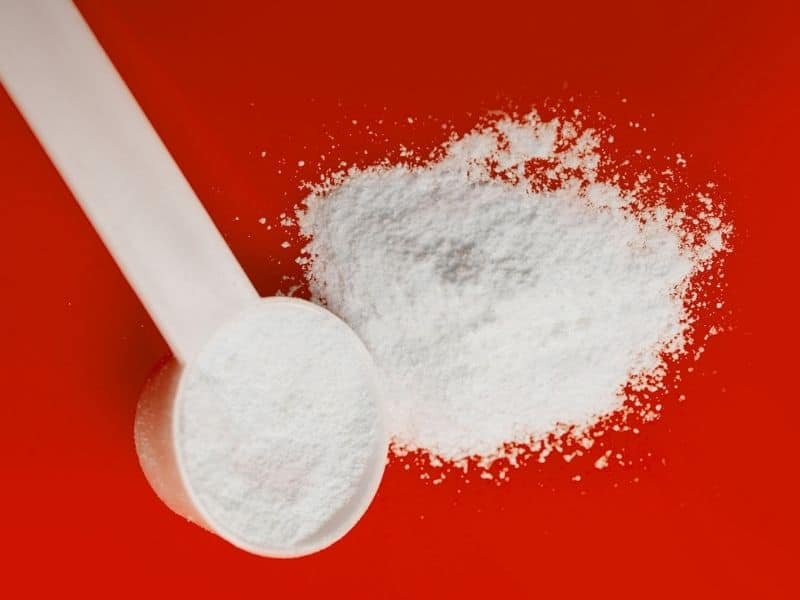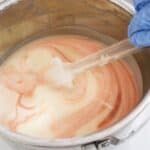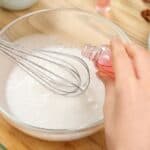You come across several different ingredients when learning how to make soap and one of the most significant is lye or sodium hydroxide. This substance performs a very important role in the soap making process. So, what is lye?
Lye, known as sodium hydroxide (NaOH) or potassium hydroxide (KOH), is a caustic alkaline substance used in soap making. It initiates saponification, which creates soap and glycerin from oils and fats. Lye is highly reactive with water and must be handled with care to avoid skin burns.
During the saponification process, the fats and oils used in the soap mixture begin to harden and turn into soap, creating solid bars of soap.Without lye, it would be impossible to make soap.
Lye is a very important ingredient and it is essential to the soap making process. Let’s take a closer look.
What is Lye?
Lye, also known as sodium hydroxide (NaOH), is a caustic alkaline substance that is used in a variety of applications, including soap making. It is a white, odorless powder that is highly reactive with water, producing heat and creating an alkaline solution.
There are two main types of lye that are commonly used in soap making: sodium hydroxide and potassium hydroxide. Sodium hydroxide is used to make solid soap bars, while potassium hydroxide is used to make liquid soap. Both types of lye are strong alkalis that are used to break down fats and oils into their component fatty acids and glycerin through a process called saponification.
Historically, lye has been used for a variety of purposes, including in the production of food, such as pretzels and hominy, as well as in the manufacturing of paper, textiles, and even gunpowder. In soap making, lye is essential because it is the catalyst that initiates the saponification process.
How Does Lye Work?
When mixed with fats or oils, lye initiates the process of saponification. Saponification is the chemical reaction that occurs between the lye and the fats or oils, resulting in the creation of soap and glycerin.
During saponification, the lye breaks down the triglyceride molecules in the fats or oils into their component fatty acids and glycerin. The lye molecules bond with the fatty acids, resulting in the creation of soap molecules. The glycerin that is produced during this process remains in the soap and helps to moisturize and soften the skin.
The amount of lye that is required to create soap depends on the type of fats or oils being used and the desired properties of the soap. Too much lye can result in a harsh soap that irritates the skin, while too little lye can result in a soft, greasy soap. Therefore, it is important to accurately measure the amount of lye used in soap making to ensure that the soap turns out just right.
How is Lye Made?
Lye can be produced through several methods.
Two common methods are electrolysis and causticization.
Electrolysis is a process in which a saltwater solution, or brine, is created by dissolving sodium chloride or potassium chloride in water. The brine is then placed in an electrolysis cell, where an electric current is passed through it. This causes the sodium or potassium ions to move to the cathode and the chloride ions to move to the anode. At the cathode, the sodium or potassium ions are reduced to form sodium or potassium hydroxide. At the anode, the chloride ions are oxidized to form chlorine gas.
Causticization is another method of producing lye. In this method, sodium carbonate (also known as soda ash) is reacted with calcium hydroxide (also known as slaked lime) to produce sodium hydroxide and calcium carbonate.
After the production process, the lye is typically collected and purified through a series of steps to remove any impurities before it is used in soap making or other applications.
What Does Lye do in Soap Making?
Lye plays a crucial role in soap making. It is the key ingredient that initiates the process of saponification, which is the chemical reaction that occurs when the lye is combined with oils and fats to create soap.
During saponification, the lye breaks down the triglyceride molecules in the oils and fats into their component fatty acids and glycerin. The lye molecules bond with the fatty acids, resulting in the creation of soap molecules. The glycerin that is produced during this process remains in the soap and helps to moisturize and soften the skin.
Why Do You Need Lye to Make Soap?
Lye is essential to the soap making process because it is what causes the saponification reaction to occur. Without lye, you would not be able to make soap.
When lye mixes with the fats and oils you use for soap making, it breaks them down into molecules of soap. During the saponification process, the oils begin hardening.
This process is essential for creating a bar of soap.
Does All Soap Have Lye?
All soap has lye in it. But, that doesn’t mean there is lye leftover in the final product.
When lye and fats are combined, they create a reaction called saponification. This reaction breaks down the oils and fats into molecules of soap. The lye is used up during this process and there is none left in the final product.
True soap is made with lye. Without lye, you would not be able to make soap.
What if You Use Too Much Lye?
If you use too much lye, it can cause the soap to be harsh on the skin. It can also make the soap less moisturizing.
If you’ve added too much lye to your soap mixture, there are a few things you can do.
One way to fix this is to add more fats and oils to the mixture. This will help balance out the lye.
Another way to fix this is to add more water to the mixture. This will help dilute the lye.
You can also try adding salt to the mixture. This will help neutralize the lye.
If you’ve added too much lye and you can’t fix it, you can always use the soap for laundry or cleaning instead of body products.
What if You Use Too Little Lye?
If you use too little lye, the soap will be oily.
If you’ve added too little lye to your soap mixture, there are a few things you can do.
One way to fix this is to add more lye to the mixture. This will help balance out the fats and oils.
When you make soap using too little lye it can sometimes be called superfatting or superfat soap. It gives the soap more moisture and can make it easier on the skin.
However, superfat soap is also more likely to spoil or go rancid.
How to Use Lye
Lye must be used with caution because it is a caustic substance. It is important to wear gloves and protective eyewear when working with lye. Lye should also be added to the soap mixture slowly and carefully to avoid any accidents.
Lye is a very important ingredient in soap making. It is what causes the saponification reaction to occur and without it, you would not be able to make soap. Lye must be used with caution because it is a caustic substance. It is important to wear gloves and protective eyewear when working with lye. Lye should also be added to the soap mixture slowly and carefully to avoid any accidents.
Is Lye Dangerous?
Lye is a caustic substance and can be dangerous if it comes into contact with your skin or eyes. It is important to wear gloves and protective eyewear when working with lye.
If lye comes into contact with your skin, it can cause burns. If lye comes into contact with your eyes, it can cause blindness.
Lye can also be dangerous if it is inhaled. Lye fumes can cause respiratory problems.
Lye is a dangerous substance and should be handled with care. It is important to wear gloves and protective eyewear when working with lye.
Lye Safety And First Aid
If lye comes into contact with your skin, rinse the area with cool water for at least 15 minutes. If lye comes into contact with your eyes, flush them with cool water for at least 15 minutes and seek medical attention ASAP.
How to Store Lye
Lye should be stored in a cool, dry place. Lye can absorb moisture from the air, so it is important to keep it in a sealed container.
Keep the lye out of reach of children and away from any place that your pet may gain access to it.
You always want to make sure that your lye is stored in a safe and secure location.
Frequently Asked Questions
Lye, also known as sodium hydroxide, is used in soap making to create a process called saponification. This process breaks down the oils and fats into molecules of soap. The lye is used up during this process and there is none left in the final product.
If you use too much lye, it can cause the soap to be harsh on the skin. It can also make the soap less moisturizing.
If you use too little lye, the soap will be oily.
Lye should be stored in a cool, dry place. Lye can absorb moisture from the air, so it is important to keep it in a sealed container. Keep the lye out of reach of children and away from any place that your pet may gain access to it.
Conclusion
In conclusion, lye is a very important ingredient for making soap, but it can also be dangerous if not handled properly. Lye should always be handled with care and you must use gloves, respiratory and eye protection when handling lye.
It is also important that you store lye in a safe and secure location out of the reach of children and pets. Just take your time and use a little bit of caution and you will be able to safely use lye to make your own handmade soap.






